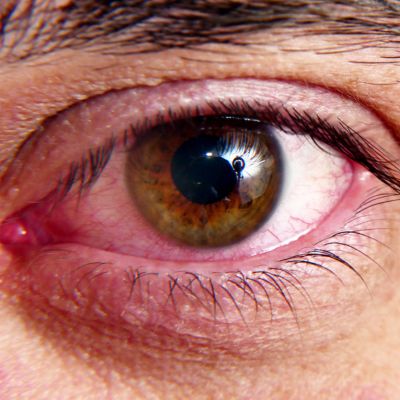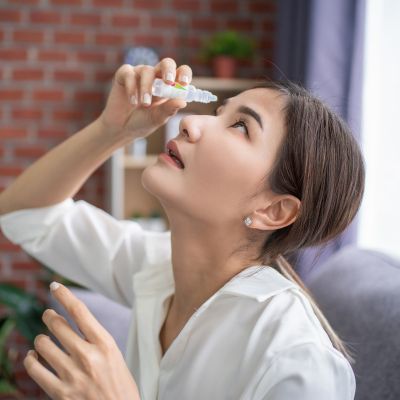As awareness of dry eye syndrome grows, more and more people are speaking up about its symptoms. This includes eyes that are:
- Dry
- Stinging
- Burning
- Gritty
- Red
People who wear contacts are at an increased risk of dry eye syndrome. According to one study, 10 – 15% of wearers stop wearing contacts due to dry eye symptoms. This is only made worse by the fact that wearing contacts improperly can cause dry eye or even intensify your symptoms.
Fortunately, there are solutions. As Dr. Travis Thompson explains, you can significantly reduce the risk of dry eye syndrome and its symptoms by following a few easy steps.
3 Tips for Contacts and Dry Eye Syndrome
1. Choose Daily Lenses
From extended-wear contacts to daily disposable lenses, there are more types of contact lenses available today than ever before. However, not all contact lenses are created equal. As Dr. Thompson explains, daily contacts are the best choice for reducing dry eye and other forms of discomfort.
According to him, “Daily disposable lenses are the absolute best option if you have any discomfort with contact lenses.” This is good news for one group that was surveyed by the CDC. They found that 99% of people surveyed who wore contacts had at least one hygiene behavior that increased their risk of an eye infection or inflammation.
Hygiene plays an important role in wearing contacts. You want to make sure that you:
- Handle them correctly
- Keep your storage case filled with contact solution
- Keep the case tightly closed with your lenses in them
- Replace your contact lens case every month
Cutting even the slightest corner when caring for your contacts can increase your risk of infection or inflammation. Reusable lenses also continue to collect deposits even if you clean them properly. As you can imagine, this doesn’t help with symptoms of dry eye syndrome, especially if you suffer from airborne allergens that can stick to your lenses.
Tears can also play an important role in your symptoms. Depending on the chemistry of your tears, hard-to-remove proteins and lipids can accumulate on your lenses. These along with other bacteria and deposits build up on your contact lenses over time. This makes it harder for tears to spread evenly across the surface of your eyes and provide relief.
Starting each day with a new pair of daily lenses will help eliminate the opportunity for any type of build-up. It also lets you off the hook if you tend to neglect caring for your contact lenses properly.
Learn more about daily contacts by reading our FAQ.
2. Choose the Right Solution
There are cases where a person may not be able to wear daily contact lenses. In other instances, a person may prefer to keep using their extended-wear lenses. Whatever the reason may be, using the right disinfecting solution is extremely important. Making the right choice is also essential for your contacts and dry eye syndrome.
According to Dr. Thompson, “Hydrogen peroxide-based cleaners like Clear Care are the best for getting proteins off the lenses and making them the most comfortable.” He recommends avoiding store-brand solutions like Equate or similar products. They can be of lower quality or incompatible with your lenses, degrading their quality, comfort, and clarity.
Can you be allergic to contacts? Learn how it’s possible.
3. Choose the Right Eye Drops
The selection of eye drops and artificial tears at your local drugstore is sure to send your head spinning. It doesn’t help that the wrong choice can make your dry eye worse, whether you wear contacts or not. In addition, not all eye drops are designed and approved to be used with contacts. This is an important factor for contacts and dry eye syndrome.
The preservatives in many eye drops can make symptoms of stinging, burning, or watery eyes worse. As Dr. Thompson explains, “The best drops for dryness with contact lenses are labeled as preservative-free artificial tears. The brand Refresh makes a few different kinds, and in my experience, they are the best.”
Are you ready to beat dry eyes and switch to daily contact lenses? Contact us today to schedule your appointment!
The best option for contacts and dry eye syndrome is switching to daily contact lenses. They ensure that you get a fresh pair every 24 hours. If those aren’t an option, make sure that you’re using a high-quality solution to keep your lenses as clean as possible. Eye drops are a great option to keep your eyes hydrated. Opt for preservative-free artificial tears for the best results.
Hardin Valley Eyecare & Optical has been serving Knoxville since 2009. Located at 10904 Spring Bluff Way, you can schedule an appointment online or give us a call at (865) 888-0892.
Editor’s Note: This post was originally published in September 2019 and has been updated for comprehensiveness and new information.





